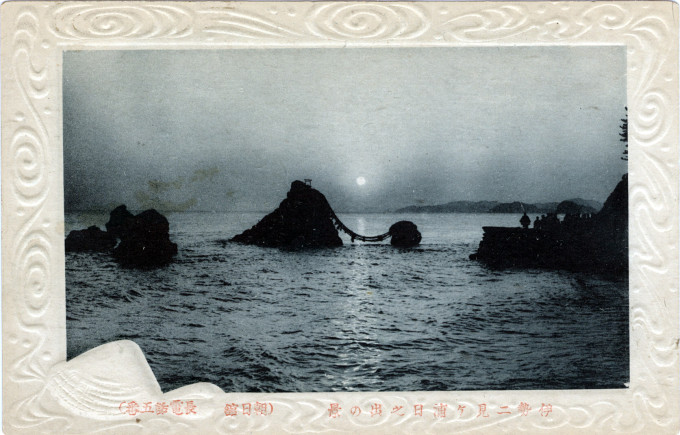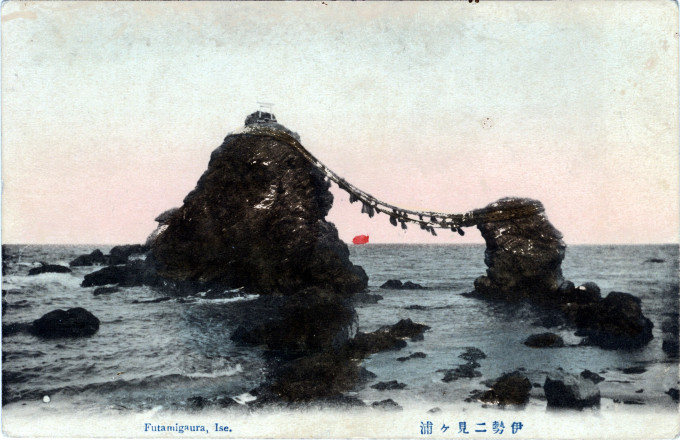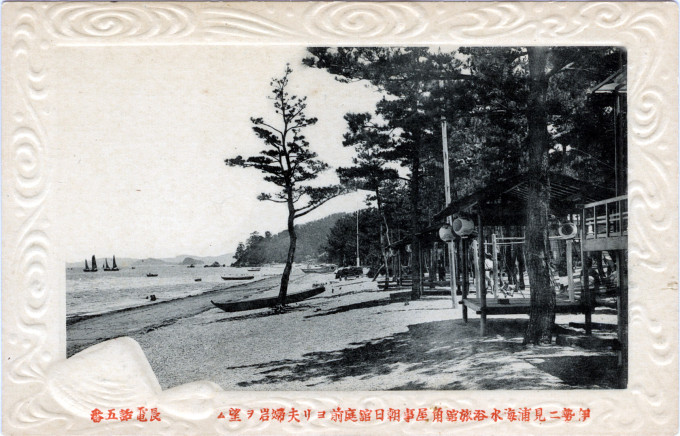“Amaterasu is the daughter of the kamis, Izanami-no-mikoto (She Who Invites) and her male partner Izanagi-no-mikoto (He Who Invites), cocreators of the Japanese islands, other deities, and humankind … The divine couple is represented on earth as sacred rocks called Meoto Iwa, or Wedded Rocks, connected together by a sacred rope made of rice straw called a shimenawa. They can be found just off the beach of Futami, a small town near Ise.
– Sacred Places of Goddess: 108 Destinations, by Karen Tate, 2005
From the wiki: “Meoto Iwa, or the Married-Couple Rocks, are two small rocky stacks in the sea off Futamigaura, Japan. They are joined by a shimenawa (a heavy rope of rice straw) and are considered sacred by worshippers at the neighboring Futami Okitama Shrine. According to Shinto, the rocks represent the union of the creator of kami, Izanagi and Izanami. The rocks, therefore, celebrate the union in marriage of man and woman. The rope, which weighs over a ton, must be replaced several times a year in a special ceremony. The larger rock, said to be male, has a small torii (traditional gate) at its peak.
“The best time to see the rocks is at dawn during the summer, when the sun appears to rise between them. Mount Fuji is visible in the distance. At low tide, the rocks are not separated by water.
“Okitama Shrine is dedicated to food goddess Miketsu. There are numerous statues of frogs around the shrine. The shrine and the two rocks are near the Grand Shrine of Ise, the most important location in Shinto.”




